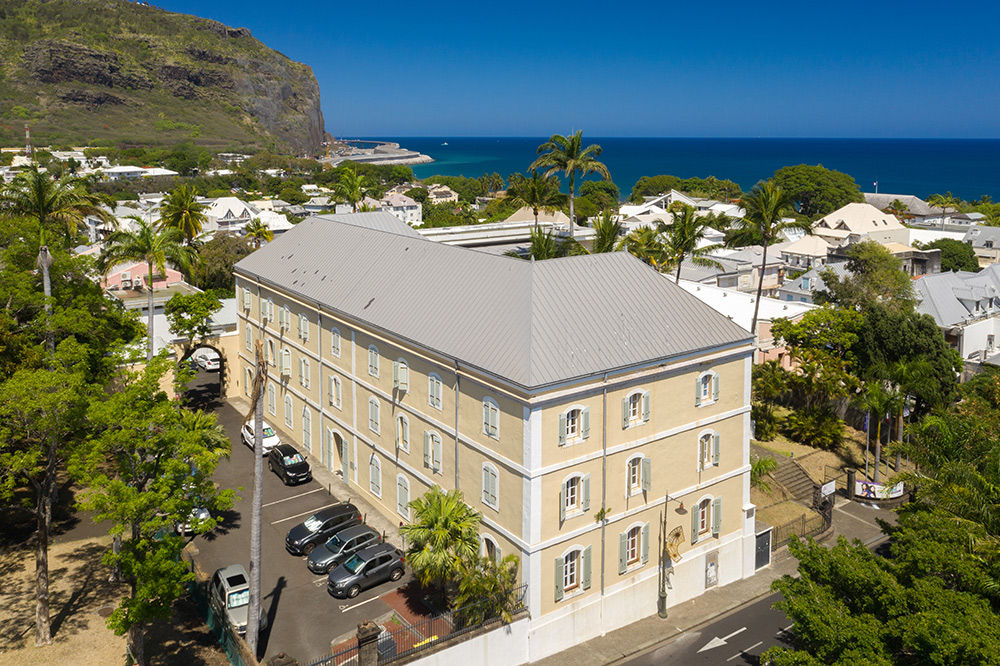
Exploring the link between personality dimensions and non-motor fluctuations in Parkinson's disease
- Type de publi. : Article dans une revue
- Date de publi. : 27/06/2025
-
Auteurs :
Mathilde BoussacF. FaggianelliEstelle HarrochAlexandre EusebioMargherita FabbriFabienne Ory MagneEmeline DescampsOlivier J. RascolChloé LaurencinAna MarquesMathieu AnheimBruno GiordanaLucie HopesCaroline MoreauAnne Sophie RollandDavid DevosDavid MaltêteSolène AnsquerElodie HainqueSophie DrapierJean-Philippe BrandelTiphaine RouaudDominique GuehlBéchir JarrayaFazia Mélissa TirTatiana WitjasJean-Philippe AzulayChristine Brefel-Courbon
-
Organismes :
Toulouse NeuroImaging Center
Hôpital de la Timone [CHU - APHM]
Centre d'investigation clinique de Toulouse
Centre Hospitalier Universitaire de Toulouse
Institut de Neurosciences de la Timone
Hôpital de la Timone [CHU - APHM]
Toulouse NeuroImaging Center
Département Neurologie [CHU Toulouse]
Centre d'investigation clinique de Toulouse
Toulouse NeuroImaging Center
Centre National de la Recherche Scientifique
Toulouse NeuroImaging Center
Hôpital neurologique et neurochirurgical Pierre Wertheimer [CHU - HCL]
Centre de recherche en neurosciences de Lyon - Lyon Neuroscience Research Center
Pathophysiologie de la maladie de Parkinson et des troubles associés
CHU Clermont-Ferrand
Institut Pascal
Thérapie guidée par l'image
Service de Neurologie [Strasbourg]
Fédération de Médecine Translationnelle de Strasbourg
Institut de Génétique et de Biologie Moléculaire et Cellulaire
Hôpital Pasteur [Nice]
Centre Hospitalier Régional Universitaire de Nancy
Centre Hospitalier Universitaire [Rennes]
Institut de recherche en santé, environnement et travail
Lille Neurosciences & Cognition - U 1172
Centre Hospitalier Régional Universitaire [CHU Lille]
Université de Lille
Département de Pharmacologie Médicale [Lille]
Département de neurologie [Lille]
CHU Rouen
CIC Poitiers – Centre d'investigation clinique de Poitiers
CHU Pitié-Salpêtrière [AP-HP]
Institut du Cerveau = Paris Brain Institute
Centre d'Investigation Clinique [Rennes]
Centre Hospitalier Universitaire de Rennes [CHU Rennes] = Rennes University Hospital [Pontchaillou]
AP-HP. Sorbonne Université
Centre Hospitalier Universitaire de Nantes = Nantes University Hospital
Centre Hospitalier Universitaire de Bordeaux
Institut des Maladies Neurodégénératives [Bordeaux]
Institut National de la Santé et de la Recherche Médicale
Université Paris-Saclay
Commissariat à l'énergie atomique et aux énergies alternatives
Université de Versailles Saint-Quentin-en-Yvelines
Hôpital Foch [Suresnes]
CHU Amiens-Picardie
Laboratoire de Neurosciences Fonctionnelles et Pathologies - UR UPJV 4559
Institut de Neurosciences de la Timone
Institut de Neurosciences de la Timone
Toulouse NeuroImaging Center
Centre d’Excellence en Maladies Neurodégénératives
- Publié dans Journal of Parkinson's disease le 29/10/2020
Résumé : Background: Parkinson's disease (PD) patients on dopaminergic drugs may experience non-motor fluctuations (NMFs) which are often heterogeneous and respond variably to treatments.
Objective: We evaluated if personality was associated to NMFs and could modulate the NMFs responsiveness to dopaminergic medication and deep brain stimulation of the sub-thalamic nucleus (STN-DBS).
Methods: From the PREDISTIM cohort, personality dimensions of 235 PD patients were assessed by the Temperament and Character Inventory (TCI) before STN-DBS (V0). NMFs were evaluated using the NMFs Severity Scale at V0 and one year after STN-DBS (V1). Linear regression models were performed between TCI dimensions and NMFs at V0; and logistic regression models were done between TCI dimensions and 1) groups of dopa-sensitive patients (responders to ON medication at V0) versus non-dopa-sensitive ones, and 2) responders versus non-responders to STN-DBS at V1. Odds ratios (OR) were also calculated.
Results: Significant associations were found between two TCI personality dimensions (“Harm Avoidance” and “Self-Directedness”) and severity of NMFs in OFF medication at V0: PD patients with higher Harm Avoidance and lower Self-Directedness scores having more NMFs. TCI personality dimensions were not associated with the dopa-sensitivity while Novelty Seeking was significantly associated with the STN-DBS-responder group for the psychiatric (OR = 1.09 [1.02–1.17]) and for the dysautonomic NMFs (OR = 1.11 [1.04–1.18]).
Conclusions: Certain personality dimensions (Harm Avoidance and Self-Directedness) are associated with NMFs severity at baseline, and PD patients with high Novelty Seeking seem to be better candidates for NMFs improvement after STN-DBS.
Plain Language Summary Non-motor fluctuations are highly invalidating for patients with Parkinson's disease and their response to treatments is variable. This new research examined personality dimensions impact on non-motor fluctuations and their responsiveness to dopaminergic medication and to deep brain stimulation. Two hundred and thirty-five patients with Parkinson's disease participated in the study and filled out several questionnaires to score their personality dimensions and their non-motor fluctuations severity before and after one year of deep brain stimulation. Comparisons were done between different groups of patients according to their response to dopaminergic treatments and to deep brain stimulation. As results, patients with personality traits of high “Harm Avoidance” (more anxious individuals) and low “Self-Directedness” (less goal-oriented individuals) had globally more non-motor fluctuations, and the personality dimension of “Novelty Seeking” (impulsive individuals) was related to a better non-motor fluctuations responsiveness to deep brain stimulation. Hence, non-motor fluctuations are associated with some specific personality dimensions on top of early onset of Parkinson's disease, long disease-duration, high doses of levodopa and female gender. Moreover, Parkinson's disease patients with impulsive-like personality seem to be better candidates for non-motor fluctuations improvement after deep brain stimulation.
Source



